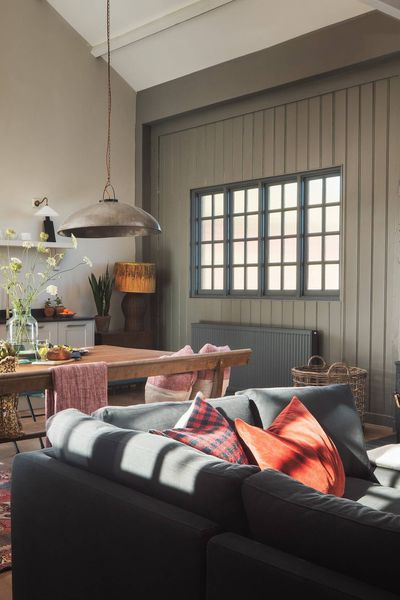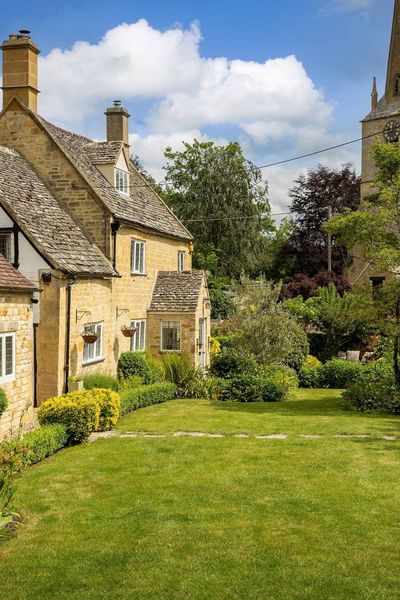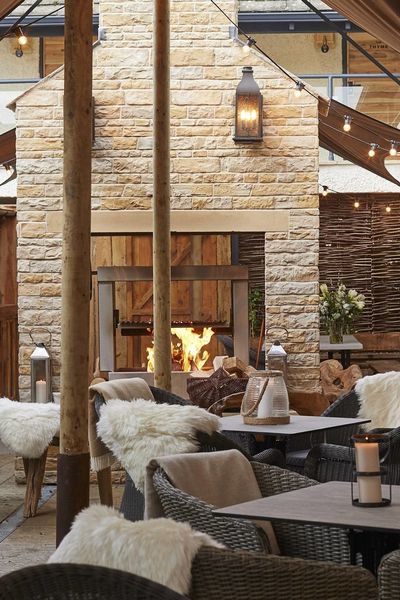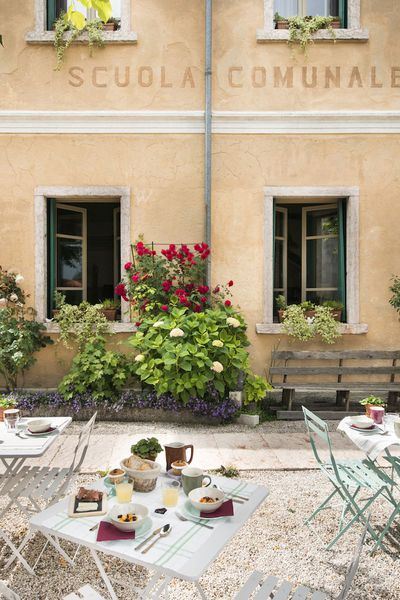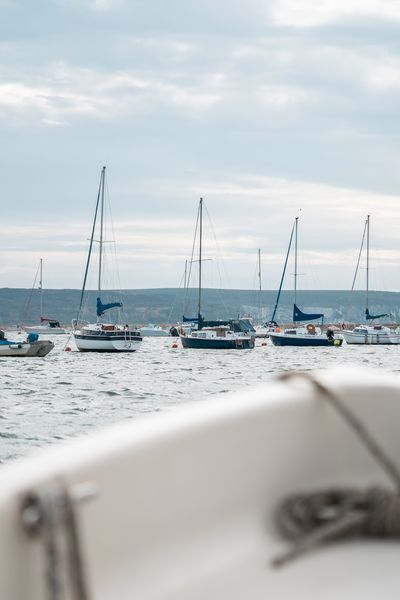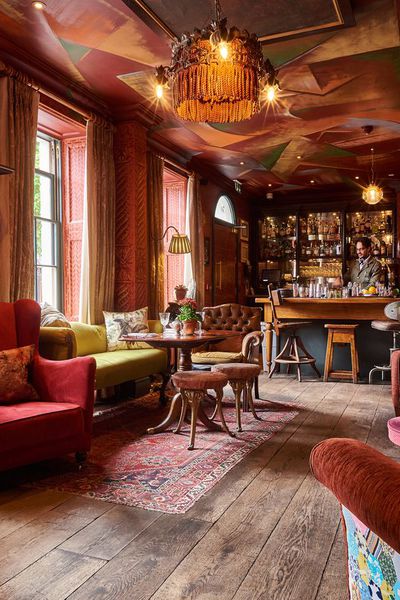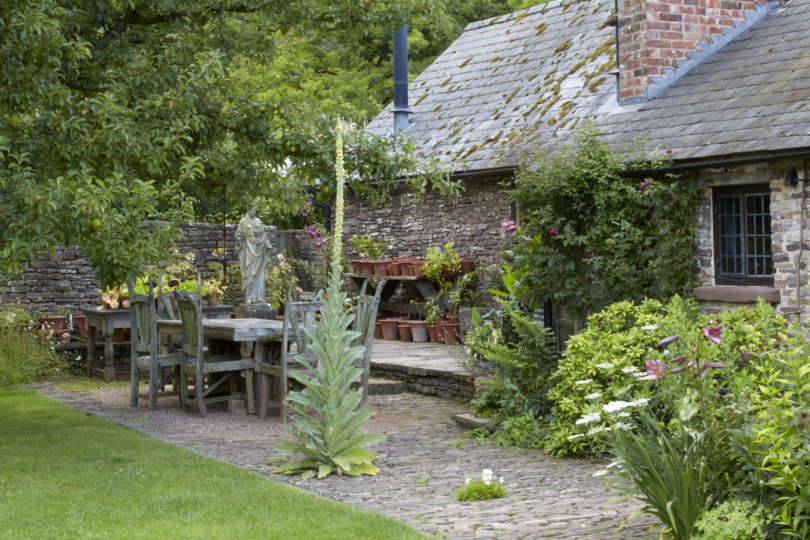
Walking tips, old romantics, and tree climbing goats: Six days on the West Highland Way
Sawday's Expert
5 min read
From a start point just outside Glasgow to Conic Hill and the shores of Ben Lomond, the West Highland Way is a stunning, challenging, yet easily accessible hiking route. Rachel, one of our team’s Scotland travel experts, gathered her bag and boyfriend, then took the route on over six days. Here's her report from the road, along with some tips on places to stop for sustenance and sleep, and plenty of inspiration on for your own West Highland wanderings.
Getting ready to go
It’s obviously important to plan carefully for multi-day hikes, whether you’re camping or hotel hopping, either of which is an option on the West Highland Way. We had the official guidebook and the Cicerone map, which were invaluable for sussing things out beforehand and navigating on the way respectively. It was helpful knowing exactly where we could stock up on supplies, meaning we could cut down on what we carried, although we still managed to end up with an incredible (and utterly needless) 18kg each. Armed with West Highland Way passports, which help support the maintenance of the trail, we decided to go from south to north, which most people do because the scenery gets ever more spectacular as you go.
Day 1: Milngavie to Drymen, 19.6km
We stayed overnight in the pleasant little town of Milngavie, so that we could get an early start on day one. Around us, a few other groups were doing the same and we shared bleary eyed nods while searching for coffee. At the Spar in town, we picked up a few last-minute items, with my boyfriend suddenly deciding to buy walking poles. This turned out to be a very good move on later days, but seemed redundant at first. The route runs on flat, well-surfaced paths out of town, turning stonier as you head for Dumgoyne, but never challenging your footing.
We put in a stop the Beech Tree Inn, which is well placed for a late coffee if you skipped it before heading off, or an early lunch if you’re already feeling the pace. They have quite an array of animals to meet as well if you have time, including some extremely cute chinchillas.
As we moved on from Dumgoyne, swishing along leafy tracks, the peaks of Conic Hill and Ben Lomond came into view. We fell into step with a lady who told us she’d met us her husband of 40 years on the West Highland Way, causing my boyfriend and I to avoid each other’s eyes for a couple of minutes. While the official route then leads through the fields and skirts the town of Drymen, we came off the trail and popped in, not to stop at the cafés and pubs, but to get my West Highland Way passport stamped!


Day 2: Drymen to Cashel Campsite: 20.9km
Not long after leaving Drymen we entered Queen Elizabeth Forest Park. The track widened and we were surrounded by trees as we approached Conic Hill. The climb up wasn’t as tough as we’d expected, even with heavy bags, but my boyfriend was very thankful for his impulse-buy walking poles and the newly laid path on the way down. The views from the top were stunning. Loch Lomond gleamed below, the shine of the water broken by its scattering of islands. After the descent, we stopped for an iced coffee at St Mocha in Balmaha and had a well-earned rest in the sunshine before pushing on.
With Conic Hill and the recuperation having taken a lot of energy, we were grateful for a bit of flatter ground, but the section after Balmaha, while less demanding, was equally scenic. Winding along the shores of the loch, it passed plenty of small beaches and if we’d had more time we might have taken a quick dip. We arrived at Cashel Campsite, right on the shores of the loch, and took a moment to set up before exploring the small on-site shop and starting on dinner.


Day 3: Cashel Campsite to Inverarnan (Beinglas Campsite): 26.8km
We packed up early to begin the long walk along the rest of Loch Lomond. Not long after the campsite, we came to where someone had set up a swing in the trees at a lovely viewpoint, but decided we’d only sit for a second to keep our momentum, as we knew we were in for a day of ups and downs. The track rises and falls in a faltering ascent before dropping down into Rowardennan, where a hotel of the same would have made a great pit stop if we hadn’t been too early for it to be open.
Soon after Rowardennan we faced a choice of the High Road or the Low Road (yes, we were singing it all day). While it might have been tempting to take the Low Road and spare the legs, we’d been told that the High Road had easier terrain, so up we went. The wide gravel track did indeed make easy walking, there was a beautiful view from a hilltop bench and a herd of goats climbing trees to eat the fresher leaves made a bizarre bonus.
The High Road dropped us back down to the bonny bonny banks of Loch Lomond, and we made like the goats and grazed on coffee and cake at the Inversnaid Hotel, readying ourselves for what we knew might be the hardest section of the whole hike. From this point, the trail narrows and bucks in a series of sharp climbs and falls, with tree roots and loose rocks that make you plan every step.
Our reward was to arrive in a huge field of bluebells, growing so thickly clustered and in such vibrant colour that we stood for a long time, admiring them. We tore ourselves away and carried on to Beinglas campsite, which is rated one of the top 5 in Scotland. After raiding the shop and heading to the on-site pub for fish and chips, we put it at number one.


Day 4: Beinglas to Inveroran (BIG day): 35km
This was our longest day, so we were first in line for when the restaurant opened for breakfast and coffee. We left the campsite and soon passed the pretty Falls of Falloch, from which point the scenery began to change from woodland to open hills and we made good time along a wide track, thankful for much easier walking than the day before.
The track climbs into a forest before winding down through areas which have sadly seen a lot of commercial forestry and are less scenic than other parts of the trail. You get views of Ben Lui, pass the sites of old priories and even see the loch into which legend says Robert the Bruce and his men threw their weapons to help them flee pursuit.
Tyndrum, our next stop, was a welcome sight. We stopped for lunch and a re-stock at the Green Welly Stop, which is a must! There is a restaurant for a proper meal, gift shops, supermarket and outdoor gear store where we stocked up on blister plasters and refilled our water bottles. After Tyndrum we followed the Old Military Road, whose hard surface pounded our feet. I wished I could swap my hard boots for soft trainers!
Many people stop at Bridge of Orchy, either the hotel or at wild camping spots near the river. It’s a tiny place, with not much more than a small train station and a fire station. We had to push on, up and over the final hill of the day, which felt endless to our tired legs. We forgave it when we reached the top and the sun was shining on Loch Tulla, sparkling far below us. After we dropped back down, we passed the Inveroran Hotel and found the popular wild camping spot, which was surprisingly busy but stunning, with the river about three metres from our tent and hills all around.


Day 5: Inveroran to Kinlochleven: 30km
A beautiful morning, waking by the riverside in crisp spring air, was slightly ruined by other inhabitants. Not our fellow campers, but midges. They aren’t a problem at altitude of course, but we were on their turf now and they swarmed through our Smidge repellent to literally have us for breakfast. We retreated to the nearby hotel for coffee.
Leaving Inveroran, we climbed up out of the forest and joined a wide track that stretched into the distance. It felt incredibly remote, with no sign of human life until we reached Glen Coe and saw the ski centre. At a lovely hotel in Kingshouse we had lunch, thinking as we enjoyed superb burgers that it would make a great overnight stop.
The next section kept close to the road, which was busy with cars and motorbikes; a bit of a shock after our days in relative wilderness. After a brief pitstop, we tackled the dreaded Devil’s Staircase a steep section of ascent that we’d been warned to approach with caution. It turned out not to be too deserving of the name and gave us incredible views of Glen Coe and Buchaille Etive Mor once we’d conquered it.
There followed a blissful couple of miles wrapped in unspoilt wilderness and with nobody but ourselves in sight, then a knee-grinding descent of 600m into Kinlochleven on gravel tracks. We were thankful to limp into Blackwater Campsite, but not inspired by the town itself, which we’d probably arrange to miss out if we did the hike again.


Day 6: Kinlochleven to Fort William 25km
The final day! A quick trip to the local Coop provided us with our final provisions for the trip, before pulling ourselves up another steep ascent and out of the bowl in which Kinlochleven sits. The path rejoined the Old Military Road, which struck straight through valley after valley in a slightly dispiriting line that vanished into the distance. We were settling into our now-comfortable pace when a group of runners passed us. We’d thought our six-day schedule was tight, but they were doing the whole West Highland Way in 36 hours.
A last climb took us up into Glen Nevis on an undulating track and gave us our first sight of our endpoint, Fort William and the peak of Ben Nevis. We clambered down and set off on the home straight, which unfortunately runs alongside the road all the way into town. It wasn’t the most picturesque way to finish the trek and arriving in Fort William on a Bank Holiday meant crowds that made a stark contrast to the empty hills and that we struggled to find anywhere to eat, but the trip still finished with a flourish.
The train back to Glasgow, which we chose over the bus out of convenience, turned out to be a beautiful journey. It takes four hours, but rolls through some spectacular countryside with deer cropping grass on rocky mountainsides. It even travelled in sight of sections of the West Highland Way, giving us a rattling recap of our last few days without, thankfully, making us climb any more hills.


Rachel’s tips for the West Highland Way
- Give yourself more than six days! Most people take eight or nine and break the route into shorter sections
- Pack lighter than you think. We could have gone without a lot of our gear and restocked along the way, which would have made the hills easier to bear!
- But pack for all weathers. We got rained on and tanned in equal measure. You can get your luggage transferred between stops for around £70, if you are worried about carrying a lot of weight
- There are suitable places to stop if you needed a hotel/ didn’t want to camp. It’s definitely worth booking in advance as even though we weren’t doing the walk in ‘busy’ season, there were still lots of people hiking
- Smidge the midge repellent doesn’t really work, so be sure to pack a midge net
- Stock up on blister plasters, you don’t want to be caught short and have painful feet
- Walking poles are essential
- Buy the official WHW passport. You can get it stamped at the various locations you visit.
Browse all our places to stay in the Scottish Highlands >
Want more travel inspiration? Get our email updates direct to your inbox >
Sign up >Share this article:
You might also like
Five great pub-to-pub walks

Christopher Wilson-Elmes
Sawday's Expert
5 min read
What’s growing on? Five of our owners on how their gardens are shaping up in Spring

Nicola Crosse
Sawday's Expert
5 min read
Park Lives: Jess Davison, youth ambassador for the Northumberland National Park

Christopher Wilson-Elmes
Sawday's Expert
5 min read

